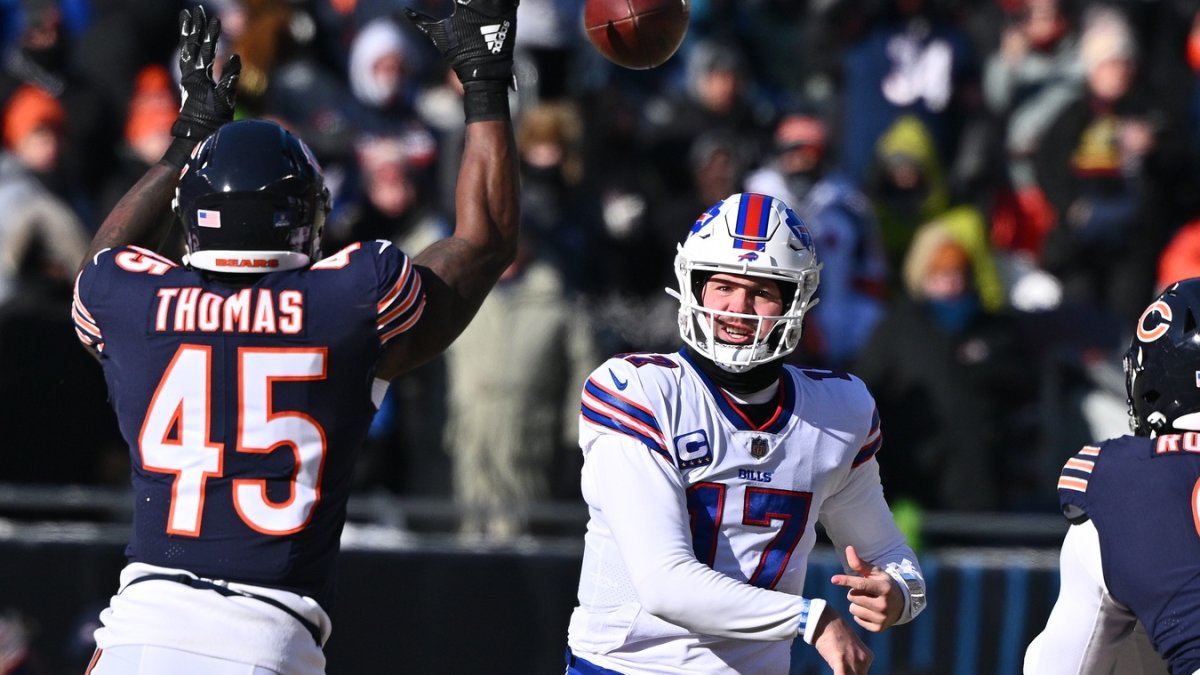• Figure out your lineup: Decide which players you plan on starting and add anyone who can help your lineup.
• Add players your opponent could want: Check who your opponent might want off the waiver wire and try to pick them up in advance.
• Watch the injury report: Check if anyone surprisingly shows up injured during the week and pick up their backups just in case.
Estimated reading time: 5 minutes
1. Figure out your starting lineup with any contingencies
Like any week, it’s important to figure out which players will be in your starting lineup.
- Make a note of potential contingencies you know you might need with players who are currently injured or recently coming back from injury.
- For example, Jalen Hurts has a slight chance of playing in Week 17, so it’s fine to keep him and another quarterback to start in case Hurts misses another week.
- Anyone on your roster who isn’t in your starting lineup or part of a contingency plan is potentially expendable.
- It’s worth noting the weather played a large factor in lineup decisions last week, but it doesn't seem like it will be much of a factor this week.
- While your strategy of who you keep on your bench and who you might add to your team might change from a usual week, your process for determining your starters should remain the same. Simply put: Start the players who are expected to give you the most points.
2. Add players who can improve your lineup
Look at the players on the waiver wire to see if any can upgrade your fantasy team.
- Streaming team defenses is a common strategy, and plenty of defenses that aren’t typically on rosters have particularly good matchups during the fantasy football playoffs.
- The Los Angeles Chargers, New York Giants and Jacksonville Jaguars have arguably the best matchups for defenses this week, and all three are generally available.
- Quarterback is another position where fantasy managers could be looking for a streamer with Jalen Hurts, Kyler Murray and Lamar Jackson all dealing with injuries in the past few weeks.
- This week’s waiver wire includes multiple quarterbacks who are available in various league sizes with particularly good matchups.
- The waiver wire also includes the best options at running back, wide receiver and tight end. There weren’t many injuries this past week and no major players who were benched, so the waiver wire isn’t as strong as in most weeks.
3. Check your opponents' roster
See who your opponent has at the start of the week and look for any weaknesses they may plan to address.
- They may be one of the teams with a weakness at quarterback or at defense and could be looking for a streamer.
- They could also have a weakness at running back, wide receiver or tight end and found a way to the fantasy championship anyway.
4. Cut players you and your opponent don’t need
Cut any player who isn’t part of your starting lineup or contingency plan and can’t help your opponent.
- You can cut anyone you won’t use anymore, but the last thing you want is to cut a player just to have your opponent pick them up and start them against you.
- For example, if you have Josh Allen and your opponent has Patrick Mahomes, there is no need for either of you to have any more quarterbacks on your roster.
- However, if you have Allen and your opponent has Jalen Hurts, then it probably makes sense to keep your backup quarterback just so your opponent can’t take him.
- Most fantasy managers have been holding onto handcuffs all season, particularly at running back. If there is no sign the starting running back is injured, there is no longer a need to hold onto that handcuff.
5. Add players your opponent could want, as well as handcuffs
If you made it to the fantasy championship round, there is probably only one or two positions where you might need a contingency, which could leave you plenty of blank spots on the bench.
- The top option is to add players your opponent might need.
- If they have been streaming defenses and weren’t planning ahead for this week, it could make sense to add a few defenses.
- If they just happen to be rotating running backs all season, then it would be good to take some of the top waiver options at running back.
- This strategy will likely be helpful only early in the week. Later in the week, it’s good to keep an eye on the waiver wire.
- If anyone surprisingly shows up on the injury report as a did not report, or they go from practicing earlier in the week to not practicing later, it could be worth picking up their backup, depending on the player.




 © 2024 PFF - all rights reserved.
© 2024 PFF - all rights reserved.